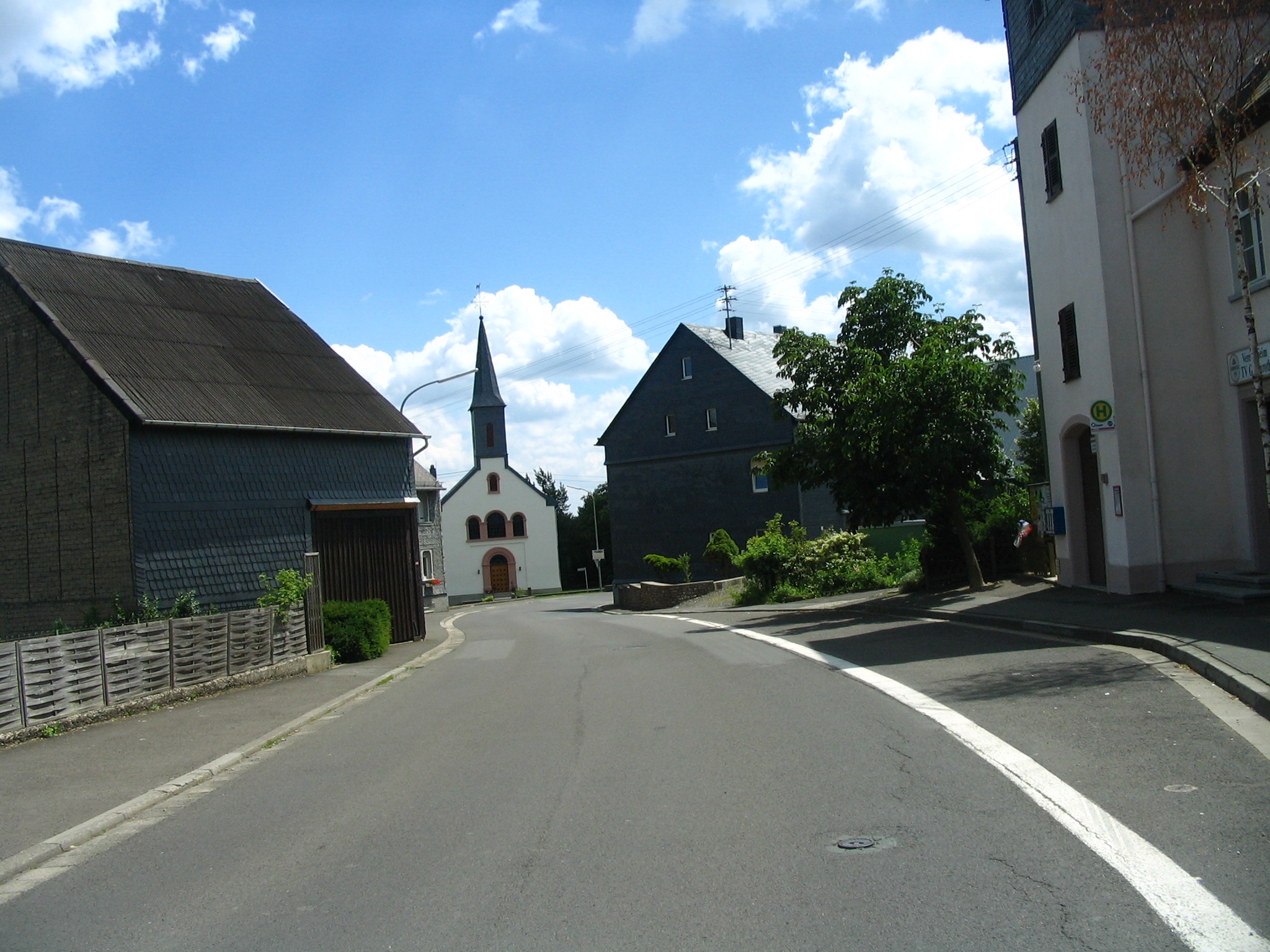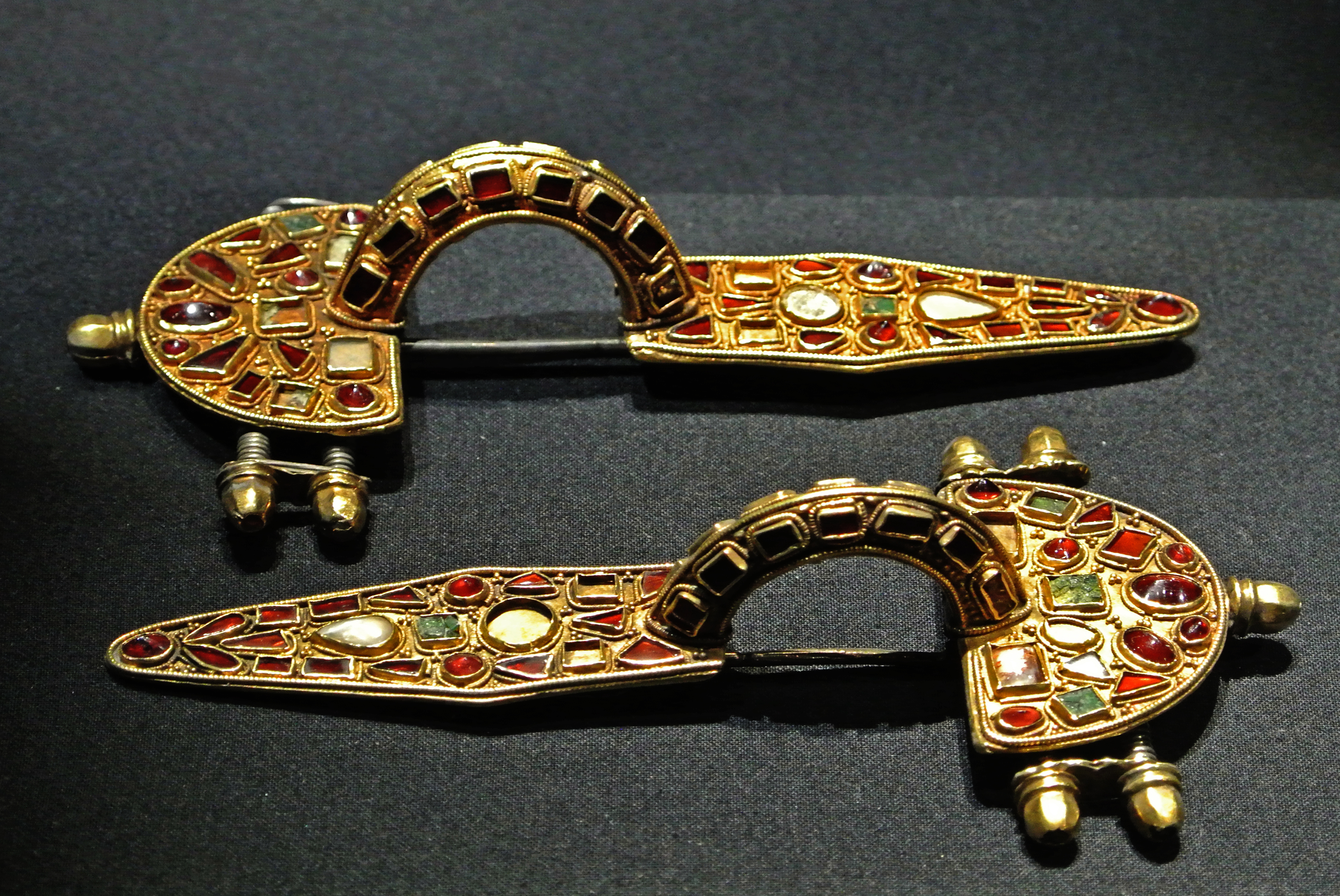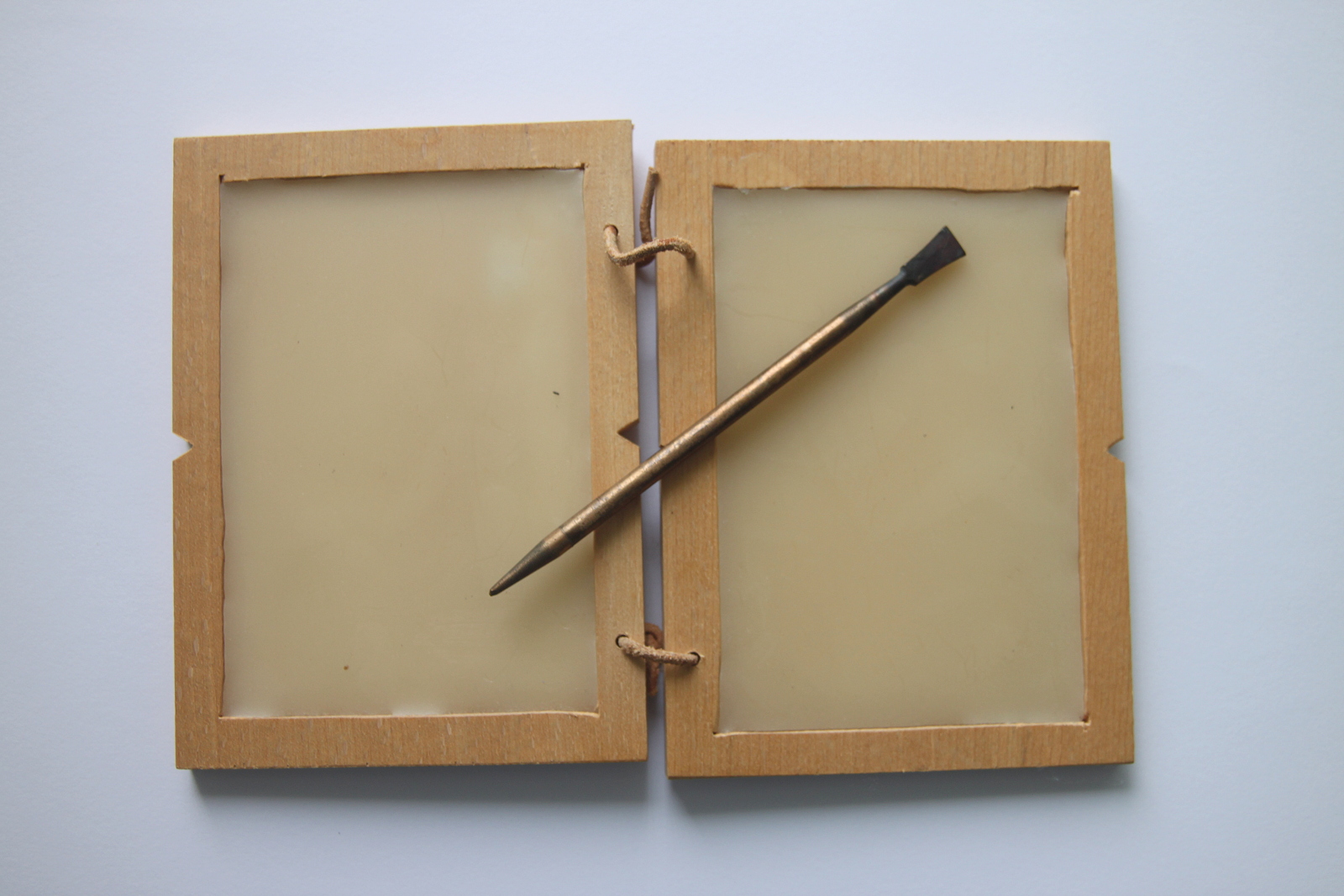|
Gösenroth
Gösenroth is an ''Ortsgemeinde'' – a municipality belonging to a ''Verbandsgemeinde'', a kind of collective municipality – in the Birkenfeld district in Rhineland-Palatinate, Germany. It belongs to the ''Verbandsgemeinde'' Herrstein-Rhaunen, whose seat is in Herrstein. Geography Location The municipality lies in the Hunsrück, east of the Idar Forest. To its east is the Kyrbach valley. Gösenroth is a linear village (by some definitions of the word, a thorpe). Neighbouring municipalities Gösenroth's neighbours are Laufersweiler, Schwerbach, Rhaunen and Weitersbach. All but Laufersweiler, which lies in the Rhein-Hunsrück-Kreis, lie within the Birkenfeld district. History The oldest archaeological finds that yield evidence of settlement within what are now Gösenroth's limits come from the first and early second century AD. These finds were made in 1936 by the ''Landesmuseum Trier'' (Trier State Museum) on the road between Gösenroth and Schwerbach (bordering on Laufersweil ... [...More Info...] [...Related Items...] OR: [Wikipedia] [Google] [Baidu] |
Birkenfeld (district)
Birkenfeld () is a district (''Landkreis'') in Rhineland-Palatinate, Germany. Its seat is the town of Birkenfeld. It is bounded by (from the south and clockwise) the districts of Sankt Wendel (Saarland), Trier-Saarburg, Bernkastel-Wittlich, Rhein-Hunsrück, Bad Kreuznach and Kusel. History In the early nineteenth century, the Nahe River was the boundary between two tiny principalities: Birkenfeld, west of the Nahe; and Lichtenberg, east of it. The principality of Birkenfeld was annexed by Oldenburg in 1817; Lichtenberg became an exclave of the Duchy Saxe-Coburg (Saxe-Coburg-Saalfeld until 1826, Saxe-Coburg and Gotha thereafter). Prussia bought Lichtenberg in 1834 and made it the District of Sankt Wendel. After World War I, the southern half of Sankt Wendel had to be ceded to the newly created Saar Territory, and the small part remaining in Prussia was then officially called the ''Restkreis Sankt Wendel'' ("remaining district of Sankt Wendel"). In 1937 the Oldenburgian Dist ... [...More Info...] [...Related Items...] OR: [Wikipedia] [Google] [Baidu] |
Weitersbach
Weitersbach is an ''Ortsgemeinde'' – a municipality belonging to a ''Verbandsgemeinde'', a kind of collective municipality – in the Birkenfeld district in Rhineland-Palatinate, Germany. It belongs to the ''Verbandsgemeinde'' Herrstein-Rhaunen, whose seat is in Herrstein. Geography Location The municipality lies on the Idarbach at the edge of the Idar Forest in the Hunsrück. The municipal area is 77.2% wooded. Neighbouring municipalities Weitersbach borders in the north on the municipality of Laufersweiler (Rhein-Hunsrück-Kreis), in the northeast on the municipality of Gösenroth, in the southeast on the municipality of Rhaunen, in the southwest on the municipality of Stipshausen, in the west on the municipalities of Hochscheid (Bernkastel-Wittlich district) and Horbruch and in the northwest on the municipality of Krummenau. History Archaeological digs at several barrows within Weitersbach's limits have unearthed finely decorated ceramics, bronze weapons and pieces of jew ... [...More Info...] [...Related Items...] OR: [Wikipedia] [Google] [Baidu] |
Rhaunen
Rhaunen is an ''Ortsgemeinde'' – a municipality belonging to a ''Verbandsgemeinde'', a kind of collective municipality – in the Birkenfeld district in Rhineland-Palatinate, Germany. It was the seat of the former ''Verbandsgemeinde'' Rhaunen. Geography Location The municipality lies at the Idar Forest in the Hunsrück in a sprawling, well watered hollow. The hollow separates the Idar Forest massif from the Soonwald massif. Within the village itself, the Lingenbach empties into the Rhaunelbach, which itself, along with the Näßbach, the Macherbach and the Büdenbach, empties into the Idarbach. The nearest major centres are Idar-Oberstein, Simmern, Morbach and Kirn. Constituent communities Also belonging to Rhaunen are the outlying centre of Neuzenbrunnen and the homesteads of Hochwälderhof and Königstein. Geology The solid rock in Rhaunen, Hunsrück slate, comes down from the Devonian. The hollow in which Rhaunen lies was formed by the many brooks that flow together her ... [...More Info...] [...Related Items...] OR: [Wikipedia] [Google] [Baidu] |
Herrstein-Rhaunen
Herrstein-Rhaunen is a ''Verbandsgemeinde'' ("collective municipality") in the district of Birkenfeld, Rhineland-Palatinate, Germany. The seat of the ''Verbandsgemeinde'' is in Herrstein. It was formed on 1 January 2020 by the merger of the former ''Verbandsgemeinden'' Herrstein and Rhaunen. The ''Verbandsgemeinde'' Herrstein-Rhaunen consists of the following ''Ortsgemeinden'' ("local municipalities"): # Allenbach # Asbach # Bergen # Berschweiler bei Kirn # Bollenbach # Breitenthal # Bruchweiler # Bundenbach # Dickesbach # Fischbach # Gerach # Gösenroth # Griebelschied # Hausen # Hellertshausen # Herborn # Herrstein # Hettenrodt # Hintertiefenbach # Horbruch # Hottenbach # Kempfeld # Kirschweiler # Krummenau # Langweiler # Mackenrodt # Mittelreidenbach # Mörschied # Niederhosenbach # Niederwörresbach # Oberhosenbach # Oberkirn # Oberreidenbach # Oberwörresbach # Rhaunen # Schauren # Schmidthachenbach # Schwerbach # Sensweiler # Si ... [...More Info...] [...Related Items...] OR: [Wikipedia] [Google] [Baidu] |
Laufersweiler
Laufersweiler is an ''Ortsgemeinde'' – a municipality belonging to a ''Verbandsgemeinde'', a kind of collective municipality – in the Rhein-Hunsrück-Kreis (district) in Rhineland-Palatinate, Germany. It belongs to the ''Verbandsgemeinde'' of Kirchberg, whose seat is in the like-named town. Geography Location The municipality lies in the Hunsrück roughly 8 km southwest of Kirchberg and 16 km southwest of Simmern. History Prehistory and antiquity Going by archaeological finds from prehistory and protohistory, the Laufersweiler area might have been settled as early as the Bronze Age and Hallstatt times. Along what is now the municipal limit between Laufersweiler and Niederweiler ran the ''Via Ausonia'' (or ''Ausoniusstraße'' in German) in Roman times. This led from Trier to Bingen am Rhein. Archaeological finds bear witness to a settlement in Roman times. Middle Ages In 1283, Laufersweiler had its first documentary mention as ''Leuferswilre'', and was owned ... [...More Info...] [...Related Items...] OR: [Wikipedia] [Google] [Baidu] |
Ortsgemeinde
A Verbandsgemeinde (; plural Verbandsgemeinden) is a low-level administrative division, administrative unit in the Germany, German States of Germany, federal states of Rhineland-Palatinate and Saxony-Anhalt. A Verbandsgemeinde is typically composed of a small group of villages or towns. Rhineland-Palatinate The state of Rhineland-Palatinate is divided into 163 Verbandsgemeinden, which are municipal associations grouped within the 24 Districts of Germany, districts of the state and subdivided into 2,257 Ortsgemeinden (singular Ortsgemeinde) which comprise single settlements. Most of the Verbandsgemeinden were established in 1969. Formerly the name for an administrative unit was ''Amt (political division), Amt''. Most of the functions of municipal government for several municipalities are consolidated and administered centrally from a larger or more central town or municipality among the group, while the individual municipalities (Ortsgemeinden) still maintain a limited degree of ... [...More Info...] [...Related Items...] OR: [Wikipedia] [Google] [Baidu] |
Nero
Nero Claudius Caesar Augustus Germanicus ( ; born Lucius Domitius Ahenobarbus; 15 December AD 37 – 9 June AD 68), was the fifth Roman emperor and final emperor of the Julio-Claudian dynasty, reigning from AD 54 until his death in AD 68. He was adopted by the Roman emperor Claudius at the age of 13 and succeeded him on the throne. Nero was popular with the members of his Praetorian Guard and lower-class commoners in Rome and its provinces, but he was deeply resented by the Roman aristocracy. Most contemporary sources describe him as tyrannical, self-indulgent, and debauched. After being declared a public enemy by the Roman Senate, he committed suicide at age 30. Nero was born at Antium in AD 37, the son of Gnaeus Domitius Ahenobarbus and Agrippina the Younger, a great-granddaughter of the emperor Augustus. When Nero was two years old, his father died. His mother married the emperor Claudius, who eventually adopted Nero as his heir; when Cla ... [...More Info...] [...Related Items...] OR: [Wikipedia] [Google] [Baidu] |
Spindle (textiles)
A spindle is a straight spike usually made from wood used for spinning (textiles), spinning, twisting fibers such as wool, flax, hemp, cotton into Thread (yarn), yarn. It is often weighted at either the bottom, middle, or top, commonly by a disc or spherical object called a spindle whorl, whorl; many spindles, however, are weighted simply by thickening their shape towards the bottom, e.g. Orenburg and French spindles. The spindle may also have a hook, groove, or notch at the top to guide the yarn. Spindles come in many different sizes and weights depending on the thickness of the yarn one desires to spin. History The origin of the first wooden spindle is lost to history because the materials did not survive. Whorl-weighted spindles date back at least to Neolithic times; spindle whorls have been found in archaeological digs around the world. A spindle is also part of traditional spinning wheels where it is horizontal, such as the Indian charkha and the great or walking wheel. ... [...More Info...] [...Related Items...] OR: [Wikipedia] [Google] [Baidu] |
Fibula (brooch)
A fibula (/ˈfɪbjʊlə/, plural fibulae /ˈfɪbjʊli/) is a brooch or pin for fastening garments, typically at the right shoulder. The fibula developed in a variety of shapes, but all were based on the safety-pin principle. Unlike most modern brooches, fibulae were not only decorative; they originally served a practical function: to fasten clothing for both sexes, such as dresses and cloaks. In English, "fibula" is not a word used for modern jewellery, but by archaeologists, who also use "brooch", especially for types other than the ancient "safety pin" types, and for types from the British Isles. There are hundreds of different types of fibulae. They are usually divided into families that are based upon historical periods, geography, and/or cultures. Fibulae are also divided into classes that are based upon their general forms. Fibulae replaced straight pins that were used to fasten clothing in the Neolithic period and the Bronze Age. In turn, fibulae were replaced as clo ... [...More Info...] [...Related Items...] OR: [Wikipedia] [Google] [Baidu] |
Frankish Language
Frankish ( reconstructed endonym: *), also known as Old Franconian or Old Frankish, was the West Germanic language spoken by the Franks from the 5th to 9th century. After the Salian Franks settled in Roman Gaul, its speakers in Picardy and Île-de-France were outnumbered by the local populace who spoke Proto-Romance dialects. However, a number of modern French words and place names, including the eventual country's name of "France", have a Frankish (i.e. Germanic) origin. France itself is still known by terms literally meaning the "Frankish Realm" in languages such as German (), Yiddish ( ), Dutch (), the derived Afrikaans (), and Danish () as well as Swedish and Norwegian (). Between the 5th and 9th centuries, Frankish spoken in Northwestern France, present-day Belgium and the Netherlands is subsequently referred to as Old Dutch, whereas the Frankish varieties spoken in the Rhineland were heavily influenced by Elbe Germanic dialects and the Second Germanic consonant shi ... [...More Info...] [...Related Items...] OR: [Wikipedia] [Google] [Baidu] |
Stylus
A stylus (plural styli or styluses) is a writing utensil or a small tool for some other form of marking or shaping, for example, in pottery. It can also be a computer accessory that is used to assist in navigating or providing more precision when using touchscreens. It usually refers to a narrow elongated staff, similar to a modern ballpoint pen. Many styluses are heavily curved to be held more easily. Another widely used writing tool is the stylus used by blind users in conjunction with the slate for punching out the dots in Braille. Etymology The English word ''stylus'' has two plurals: ''styli'' and ''styluses''. The original Latin word was spelled ; the spelling ''stylus'' arose from an erroneous connection with Greek (), 'pillar'.''Oxford Latin Dictionary'', s.v. "stilus" (2012). The Latin word had several meanings, including "a long, sharply pointed piece of metal; the stem of a plant; a pointed instrument for incising letters; the stylus (as used in literary composi ... [...More Info...] [...Related Items...] OR: [Wikipedia] [Google] [Baidu] |
Tumulus
A tumulus (plural tumuli) is a mound of earth and stones raised over a grave or graves. Tumuli are also known as barrows, burial mounds or ''kurgans'', and may be found throughout much of the world. A cairn, which is a mound of stones built for various purposes, may also originally have been a tumulus. Tumuli are often categorised according to their external apparent shape. In this respect, a long barrow is a long tumulus, usually constructed on top of several burials, such as passage graves. A round barrow is a round tumulus, also commonly constructed on top of burials. The internal structure and architecture of both long and round barrows has a broad range; the categorization only refers to the external apparent shape. The method of may involve a dolmen, a cist, a mortuary enclosure, a mortuary house, or a chamber tomb. Examples of barrows include Duggleby Howe and Maeshowe. Etymology The word ''tumulus'' is Latin for 'mound' or 'small hill', which is derived from th ... [...More Info...] [...Related Items...] OR: [Wikipedia] [Google] [Baidu] |









